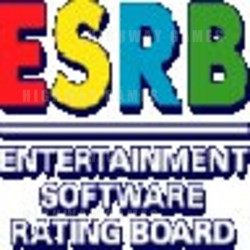The Entertainment Software Rating Board (ESRB) announced advances to the computer and video game rating system last week designed to provide parents and other consumers with a new and unprecedented level of detail about game content. The changes include the addition of four new ESRB content descriptors - short, standardized phrases printed on the back of game boxes that alert consumers to content elements that may be of interest or concern - and new, bolder labels intended to draw consumer attention to those content descriptors. The rating system changes were developed in consultation with experts from both inside and outside the interactive entertainment software industry, including child development experts and family advocates.
"The ESRB is continuously searching for ways to make computer and video game ratings even more helpful to parents. These changes ensure that consumers have the information they need to make informed purchasing decisions," said Patricia Vance, President of the ESRB.
Effective immediately, ESRB has added four new content descriptors to the 26 that already exist. The new descriptors will help consumers more precisely evaluate the extent and intensity of violent content in computer and video games by distinguishing between the kind of animated violence that frequently appears in children's cartoons and the realistic-looking violence that may appear in advanced M-rated (Mature) titles intended for gamers 17 and older. The new content descriptors are:
Cartoon Violence, defined as "violent actions involving cartoon-like characters. May include violence where a character is unharmed after the action has been inflicted."
Fantasy Violence, defined as "violent actions of a fantasy nature, involving human or non-human characters in situations easily distinguishable from real life."
Intense Violence, defined as "graphic and realistic-looking depictions of physical conflict. May involve extreme and/or realistic blood, gore, weapons, and depictions of human injury and death."
Sexual Violence, defined as "depictions of rape or other violent sexual acts."
Consumers using the ESRB web site's rating search feature may incorporate these content descriptors into their game search parameters. For example, parents can generate a list of M-rated games that did not receive "intense violence" or "sexual violence" content descriptors. Last year, 63 percent of games rated by the ESRB received an E (Everyone) rating, 27 percent were rated T (Teen), 8 percent were rated M (Mature), and 2 percent received an EC rating (Early Childhood).
Professor Kimberly Thompson, Director of the Harvard School of Public Health's KidsRisk project and the author of several studies about entertainment rating systems, advised ESRB on the rating system changes, adding, "the specificity of the ESRB's new violence-related content descriptors is a major advantage of the computer and video game rating system. Armed with this new level of detail, parents are better equipped than ever to exercise their own judgment and decide which games are appropriate for their children."
The ESRB also announced that effective September 15, it will require the placement of new labels on the back of game boxes. The new labels draw consumer attention to both the age rating and content descriptors assigned to game titles by the ESRB. The new labels are more prominent, visible, and informative than the labels they will replace. In addition, ESRB rating symbols will continue to be published on the front of all game boxes.
"This change is designed to ensure that parents can't miss the critical content information printed on game boxes, which frequently provides greater insight into why a game has received its rating," explained Patricia Vance, President of the ESRB. "To get the most from the ESRB rating system, parents should check both the rating symbol on the front of the game box and the content descriptors on the back. When parents check the rating and the content descriptors, they know exactly what they're getting."
Also effective September 15, the ESRB's "M" (Mature) and "AO" (Adults Only) icons will be modified to include the minimum recommended age for each rating category. The categories themselves are unaffected by this modification, only the icon design will change to ensure that consumers better understand the designated age ranges for these categories.
The ESRB is a self-regulatory body established in 1994 by the IDSA which independently applies and enforces ratings, advertising guidelines, and online privacy principles adopted by the industry. For more info, please visit the
ESRB site.




